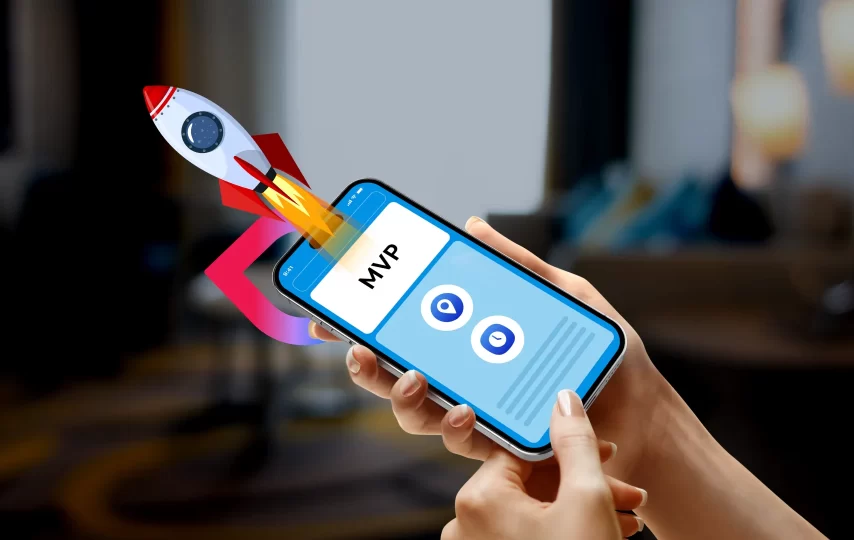Introduction to MVP in Mobile App Development
Building a Minimum Viable Product (MVP) is a crucial step in the mobile app development process. An MVP allows you to create a simplified version of your app, focusing on core functionalities that solve a key user problem. It provides early market exposure, helping validate your idea and test its viability before committing more resources.
Benefits of Developing an MVP
Cost Efficiency and Resource Management
An MVP requires fewer resources, allowing you to focus your budget on the most important features. By minimizing development time, you reduce costs while still ensuring the app serves its primary purpose.
Testing Core Features Before Full Launch
The MVP allows you to test essential features and user interactions. By doing so, you can identify which aspects of your app resonate most with users and which need refinement before investing in a full-scale launch.
Gathering User Feedback Early
One of the most valuable benefits of an MVP is that you can gather feedback from real users at an early stage. This feedback helps fine-tune your app’s user experience and overall functionality.
Mitigating Risks in App Development
Since an MVP is a simplified version, it reduces the risk of failure by focusing on essential features first. It helps developers learn what works without wasting time on features that may not appeal to the target audience.
Key Elements of a Successful MVP
Focusing on Solving a Core Problem
Your MVP should be laser-focused on solving one specific problem that your target audience faces. Clarity in the problem and solution will increase the likelihood of adoption.
Prioritizing Essential Features
Identifying which features are critical for the app’s main functionality is key. Avoid feature bloat—add additional functionalities only after the core product has been validated.
Defining Clear Success Metrics
Set measurable goals for your MVP, such as user adoption, engagement levels, or retention rates. These success metrics help in evaluating the MVP’s performance and planning its future iterations.
Steps to Build a Mobile App MVP
Choosing the Right Tech Stack
Selecting the best platforms and frameworks ensures that your MVP can be easily scaled and maintained. This is where hiring professional app developers becomes invaluable. Experts can guide you in selecting the right tech stack and avoid potential pitfalls in the development process. With experienced developers, you benefit from technical proficiency and industry knowledge, ensuring your MVP is both functional and built for growth.
Conducting Market Research
Begin with in-depth market research to understand user pain points, behavior patterns, and the competitive landscape. Research helps ensure that your MVP addresses real market needs.
Analyzing Competitor MVPs
Studying competitor apps helps you avoid their mistakes and identify gaps that your MVP could fill. This is critical to differentiate your product and offer something unique.
Defining the Core Functionality
Focus on one or two main features that represent your app’s core value proposition. The goal is to solve one problem excellently rather than offering multiple underdeveloped features.
Identifying Key User Problems
By zeroing in on the primary challenges your target audience faces, you ensure that your MVP resonates with potential users from the start.
Prototyping and Wireframing
Start with basic sketches to outline the user journey, then create wireframes to visualize the app’s layout and interaction flow. This process ensures a smooth user experience right from the MVP stage.
Wireframing for Clarity and User Experience
Wireframes make it easier to plan user navigation and interactions, reducing confusion during the app development phase.
Choosing the Right Tech Stack
Select platforms and frameworks that offer flexibility for future scaling. Native development tools, such as Swift for iOS and Kotlin for Android, are commonly chosen for MVPs.
Tools and Frameworks for MVPs
Leveraging lightweight frameworks like React Native or Flutter allows you to build a cross-platform MVP faster, without sacrificing performance.
Developing and Testing the MVP
Using agile methodologies ensures that your development team can pivot or iterate quickly based on early feedback. Regular testing, both in-house and through alpha/beta phases, helps identify bugs and usability issues before a wider launch.
Alpha and Beta Testing Phases
In these phases, you can gather data on user interactions and quickly resolve potential issues, improving the quality of the final product.
MVP Success Factors
Speed of Development
The faster you launch, the quicker you receive feedback and can iterate. Speed is essential in competitive markets where a delayed launch could mean losing market share.
User-Centered Design
Even at the MVP stage, design should prioritize user experience. Clear navigation, intuitive interfaces, and fast load times are crucial.
Scaling the MVP Post-Launch
Once your MVP proves successful, you can start scaling by adding more features and refining existing functionalities. The iterative process is smoother when built on a strong MVP foundation.
Common Mistakes to Avoid in MVP Development
Overcomplicating the Initial MVP
Adding too many features can overwhelm users and dilute the core value of the product. Keep it simple.
Skipping Market Validation
Launching without conducting proper market research often leads to an MVP that doesn’t meet user needs, resulting in wasted resources.
Ignoring User Feedback During MVP Stages
Feedback is invaluable at this stage. Ignoring it can lead to a product that fails to resonate with your audience.
Tools for Building an MVP
Some of the top tools include Figma or Adobe XD for wireframing, InVision for prototyping, and TestFlight or Google Play Console for distributing beta versions. For user feedback, tools like SurveyMonkey or UserTesting.com can be useful.
The Role of Feedback in MVP Evolution
Gathering Meaningful Feedback from Early Users
Use feedback loops to continuously improve the app. Feedback collected from early users provides insights into usability issues and helps shape the app’s future development.
How to Implement User Feedback Effectively
Categorize feedback based on frequency and impact, then prioritize updates that enhance core functionality or improve the user experience.
Deciding When to Move Beyond MVP
Key Indicators for Transitioning from MVP to Full Product
When your app’s key performance indicators, such as user engagement or conversion rates, meet the success metrics set for the MVP, it’s time to start scaling.
Timing the Expansion Correctly
Scaling too soon can lead to resource strain. Ensure that your MVP has a strong foundation before building additional features.
Main Key Takeaways
- Building an MVP focuses on delivering the core solution to user problems.
- Successful MVPs require in-depth market research, prioritizing essential features, and a user-centered design.
- Continuous iteration based on feedback is crucial for evolving the MVP into a full-scale app.
FAQs
1. How long does it take to build an MVP?
An MVP typically takes 2-4 months, depending on complexity and available resources.
2. Can I scale an MVP to a full app easily?
Yes, but only after ensuring that the MVP has a solid foundation and meets user needs.
3. How do I know if my MVP is successful?
Track success metrics like user engagement, retention rates, and market demand.
4. What is the best platform for MVP development—iOS or Android?
The choice depends on your target audience. For broad reach, you might consider cross-platform solutions like React Native or Flutter.






